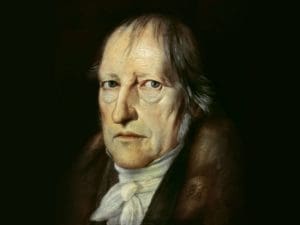
2 a.m. thoughts are quite a thing to ponder, but the afternoon thoughts accompanying the sip of tea are also worth talking about. Sitting on the balcony with legs stretched from the porch, gazing over the blue sky with white clouds hovering over it. “Who am I?” Ahh! The classic but cliched existential question. The question of identity and the idea of – the Self are pretty intriguing. In this article, we will discuss what the philosophers and psychologists have to offer us regarding the concept of the self.
Beginning on a very trivial note, what perfectly describes the word identity? Many often take the word for granted and consider it synonymous with the persona. Or, as Carl Jung would put it, the mask we wear to conform to the existing social dictates. One’s identity is often drawn out of the responsibilities one adopts and the deeds one performs.

The Four Identities
From a psychological and scientific perspective and continuing the same argument of identity and responsibilities, the “Neo-Ericksonian” identity status paradigm qualitatively relates an individual’s commitments to their identity. Developed by a renowned developmental psychologist – James Marcia, this paradigm is based on the idea of exploration and commitment.
The central defining idea is that a person’s identity is based on their commitments to themselves. They then proceed to display deliberate exploration efforts concerning their goals. The degree to which one manifests these two behaviors in the social context can be defined by four possible permutations:
- Identity Diffusion: When one lacks interest in committing to potential roles following a lack of any exploration.
- Identity Foreclosure: When one begins choosing commitments and seems willing to keep himself open to relevant values or goals.
- Identity Moratorium: When a person displays extreme readiness to adopt commitments but fails to take any decision concerning those commitments.
- Identity Achievement: When a person successfully commits to their identity choices.

Self-Esteem and Discrimination
Homo sapiens are social creatures. We are nested in very complex and diverse social structures. Our participation in large-scale social entities constitutes a significant part of our identities. From an anthropological perspective, an individual’s group defines their collective identity.
Anthropologists have recognized the word identity predominantly in two ways- One is that identity is defined by the self and our idiosyncrasies (similar to that of an Eriksonian way). The other is the identity of an individual in the sociological context, that is, the group identity concerning the group they belong to.
This later approach to defining identity is a primordial one. That is, an individual’s identity is a fixed entity defined by the group they belong to, wherein the group is defined by factors that mainly involve common ancestry, common biological traits, shared geographical region, and a mutually agreed-upon historical space.
An individual might consider himself patriotic regarding his citizenship of the country he lives in, or someone might consider themselves religious in the context of their beliefs. This identity does not arise out of any unique idiosyncrasies, nor are they naturally occurring, but in fact, it is an identity that is willingly adopted and shared by many others with common interests in particular beliefs.
Group identity is often tied to a sense of self-esteem. The dominant issue which arises out of the formation of diverse collective identities is the problem of discrimination. Researchers in the field of Anthropology and Sociology have tried to address the problem of discrimination amongst individuals, and why they engage in it, that is to say, why people naturally tend to favor people from “their own group” over outsiders.
The question of self-esteem and discrimination has been extensively researched by scholars working in the social identity tradition. It has been observed that a simple act of merely drawing an abstract boundary (cognitive distinction) between people into groups can affect people’s evaluation of others and how they perceive themselves.
All the World’s a Stage, and We’ve Got Five Players
Renowned social psychologists Cote and Levin created a typology for classifying personalities and identifying them with particular traits to implement an Identity Formation strategy. This typology is summarized in the table below:
|
|
Psychological symptoms | Personality symptoms | Social symptoms |
| Refuser | Develops cognitive blocks that prevent the adoption of adult role schemas | Engages in childlike behavior | Shows extensive dependency upon others and no meaningful engagement with the community of adults |
| Drifter | Possesses greater psychological resources than the Refuser (i.e., intelligence, charisma) | Is apathetic toward the application of psychological resources | Has no meaningful engagement with or commitment to adult communities |
| Searcher | Has a sense of dissatisfaction due to high personal and social expectations | Shows disdain for imperfections within the community | Interacts to some degree with role models, but ultimately, these relationships are abandoned |
| Guardian | Possesses clear personal values and attitudes but also a deep fear of change | Sense of personal identity is almost exhausted by a sense of social identity. | Has an extremely rigid sense of social identity and strong identification with adult communities |
| Resolver | Consciously desires self-growth | Accepts personal skills and competencies and uses them actively | Is responsive to communities that provide opportunities for self-growth |
In addition to these, Kenneth Gergen, an American social psychologist, coined three additional terms in his book: “The Purpose and Power of Identity: Exploring the Realities and Possibilities,” adding to the classifications in the above table.
- Strategic Manipulator: A strategic manipulator is a person who begins to regard all senses of identity merely as role-playing exercises and who gradually becomes alienated from their social “self.”
- Pastiche personality: The pastiche personality abandons all aspirations toward a true or “essential” identity instead of viewing social interactions as opportunities to play out and hence, become their roles.
- Relational Self: The relational self is a perspective by which persons abandon all sense of exclusive self and view all sense of identity in terms of social engagement with others.
Gergen considered that these traits follow each other in phases and are associated with the rise of postmodernist culture and modern technology.
Cogito, Ergo Sum

Coming towards the concept of identity from a philosophical perspective, Rene Descartes is known for his dictum “I think therefore I am,” which addresses the mind-body problem by materializing the concept of individual consciousness. In his book Discourse on the Method, Descartes argues that man’s capability of thinking and questioning is what defines him as a unique individual. The act of perceiving oneself as a stranger to oneself is what helps one recognize one’s own identity. It’s through this point identity- an utterly virtual concept- started being defined in an empirical sense.
In opposition to Descartes’s presupposition, Hegel argues, in his classic Dialectic format, that consciousness doesn’t rise independently in and of itself but is a dynamic process that occurs when two minds interact.

Hegel’s premise supposes that identity is primarily a socially constructed entity. Surprisingly, Nietzsche, agreeing with Hegel, builds upon a similar argument stating identity cannot be a singularity (a soul within a body as thought by Descartes) but, in fact, a living interaction of multiple factors surrounding an individual’s environment, resulting in an ever-changing thing which doesn’t remain static.
In his book- Oneself as Another, Ricoeur, a French philosopher, draws a distinction within the concept of identity.

First, the ipsem identity, which is a personally defined identity (Who am I), and the idem identity, which arises out of the identification of an individual with an external static entity, that, a third person’s perspective of one’s own identity.
Many scholars still debate the idea of identity as a fluid concept with hardly defined boundaries. Since identity is a virtual concept, many do not restrict themselves to predefined notions and methods when approaching the study of identity. By contrast, some attempt to capture and crystallize this dynamic and fluid self-expression by following already laid grounds on the subject matter.
Beyond Identity
On a concluding note, I would summarize Brubaker and Cooper. B&C, in their book- “Beyond Identity” dissects different uses of the word identity.
Identity as Self-Definition
Here, identity draws distinctions between the individual and “commonly defined universal interests,” which are instrumental in nature. Here, identity is drawn out of the conscious efforts one makes governed by one’s unique self-understanding. Social actions are defined by this identity they willingly adopt.
Identity as a Collective Occurrence
Identity can be used to define the social groups and institutions an individual wishes to identify with. Such identification is closely linked to self-esteem and is often a significant cause of discrimination.
Identity as self-hood
Here, the concept of identity is restricted to an individual’s personal idiosyncrasies. Here, a foundational and primary definition of oneself is laid through the concept of identity.
Identity as a Dynamic Process
Not limiting identity to a static and immortal soul within a body, it is, in fact, defined as a dynamic living entity that changes through social action. Such an understanding of identity is found in “new social movement” literature.
Post-modernist view of identity
As a result of multiple competing theories surrounding the concept of identity, this has led to a dull and hopeless postmodernist view that considers identity as a fragmented, ever-changing, chaotic entity.
About the Author: Dhiviyansh Punamiya is a first-year Manipal Institute of Technology student.


Be the first to comment